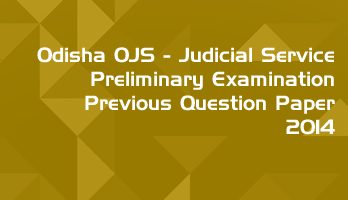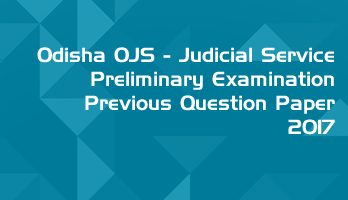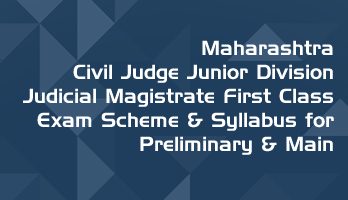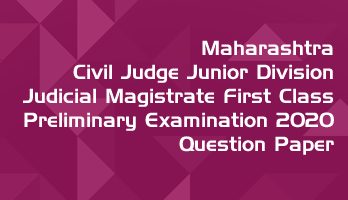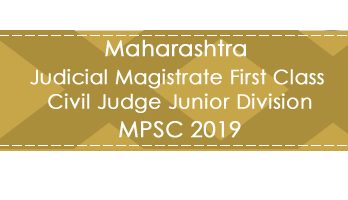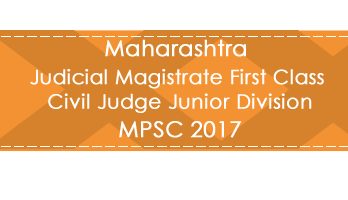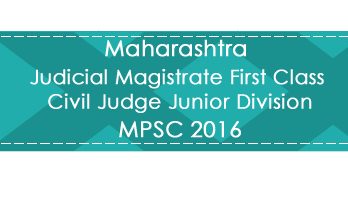Odisha OPSC OJS Judicial Prelims 2025 and 2026 - 155 Mock Tests & Previous Question Papers
- 100 Full Length Mock Tests - with unlimited practice
- 55 Topic wise Mock Tests covering all the topics in the syllabus
- Previous Question Papers - with official answer keys
- Downloadable PDF copies of all bare acts as per syllabus
- Database of over 15000+ MCQs
- Mock Tests designed as per latest syllabus and pattern
- Access valid for one year from date of purchase
- Questions & Answer Choices randomly shuffled in every attempt for better practice
- Accessible 24 x 7 via Smart-Phone browsers, Laptops, Desktops and Tablets
- This question paper, with official answer key is available on our Odisha OJS Preliminary Online Mock Test & Previous Question Papers Series.
- Unlimited access for one year from the date of purchase
- Mock tests are updated as per the latest pattern and syllabus
- See the links at the top to buy the online Odisha OJS Judicial mock tests
1. The structural part of Constitution of India is to a large extent derived from:
(A) Government of India Act, 1919
(B) Government of India Act, 1935
(C) Pitts Act, 1784
(D) Indian Independence Act, 1947
2. The Constitution of India describes India as:
(A) Quasi-federal
(B) A Union of States
(C) A Federation of States and Union Territories
(D) Partly unitary and partly federal
3. The provision of preventive detention is mentioned in:
(A) Article 20
(B) Article 22
(C) Article 23
(D) Article 24
4. A person who is not a Member of Parliament can remain Minister only for:
(A) One Month
(B) Two Months
(C) Six Months
(D) None of the choices
5. Who among the following is known as the guardian of public purse in India?
(A) Comptroller and Auditor General
(B) Parliament
(C) Finance Commission
(D) Finance Minister
6. The Proclamation of Emergency under Article 352 must be approved by both the houses of Parliament within from the date of issue.
(A) One month
(B) Two months
(C) Three months
(D) Six months
7. By which Constitutional Amendment the number of Ministers has been limited to 15 percent of the total number of members of the Lower House?
(A) Ninetieth Amendment
(B) Ninety-first Amendment
(C) Ninety-second Amendment
(D) Ninety-third Amendment
8. Which of the following established Diarchy in India?
(A) Indian Council Act, 1909
(B) Government of India Act, 1919
(C) Government of India Act, 1935
(D) None of the choices
9. Judicial Review of the 9th Schedule of the Indian Constitution has been made permissible by:
(A) Keshavananda Bharti Vs. State of Kerala
(B) M. Nagraj Vs. Union of India
(C) Minerva Mills Ltd. Vs. Union of India
(D) I. R. Coelho Vs. State of Tamil Nadu
10. The number of Articles and Schedules in original Indian Constitution were:
(A) 395 Articles and 8 Schedules
(B) 394 Articles and 8 Schedules
(C) 396 Articles and 10 Schedules
(D) 395 Articles and 7 Schedules
11. Section 115 of Code of Civil Procedure relates to:
(A) Error of fact
(B) Error of law
(C) Jurisdictional error
(D) Erroneous decision
12. Which of the following is not a rule of pleading?
(A) Pleadings should state fact and not law
(B) Facts stated should be material facts
(C) Pleadings should state the evidence
(D) Facts should be stated in concise form
13. The principle underlying is that where the parties have had an opportunity of controverting a matter that should be taken the same thing as if matter had been actually controverted and decided.
(A) Explanation III, Section 11 CPC
(B) Explanation IV, Section 11 CPC
(C) Explanation VI, Section 11 CPC
(D) Explanation VII, Section 11 CPC
14. Which of the following is not correct?
(A) Question of joinder of parties is a matter of procedure and not substantive right
(B) Objection as to non-joinder and misjoinder of parties has to be taken at the earliest possible opportunity
(C) If necessary party is not joined, suit can be dismissed on that ground alone
(D) Where a defendant is added, plaint need hot be amended
15. Where the suit abates on account of failure of the plaintiff to bring the legal representatives of the deceased defendant:
(A) Such abatement will operate as res judicata
(B) No fresh suit will lie on the same cause of action
(C) No application to set aside the dismissal can be filed
(D) All of the choices
16. A decree should be drawn up within days from the date of judgement.
(A) 15
(B) 30
(C) 45
(D) 60
17. Provision of Section 80 of the CPC is:
(A) Directory only
(B) Precautionary only
(C) Mandatory
(D) Depend on the nature of suit
18. Defendant is entitled to defend the suit as of right in :
(A) Summary suit
(B) Ordinary suit
(C) Summary and Ordinary suits
(D) None of the choices
19. Order XIII of CPC requires parties to produce the documentary evidence:
(A) On or before settlement of issues
(B) At any stage of proceedings
(C) At any stage of proceedings but before pronouncement of judgement
(D) When the Court directs
20. Order V of CPC deals with :
(A) Summons to witnesses
(B) Summons to defendant
(C) Summons to witnesses and defendants
(D) Summons in general
21. Under which Section of Code of Criminal Procedure the term offence has been defined?
(A) Section 40
(B) Section 2(n)
(C) Section 2(m)
(D) Section 2(p)
22. A proclaimed person whose property has been attached can claim the property or sale proceeds on appearance within:
(A) 6 months of attachment
(B) 1 year of attachment
(C) 2 years of attachment
(D) 3 years of attachment
23. Minimum number of judges of High Court required to sign confirmation of death sentence:
(A) One
(B) Two
(C) Three
(D) Four
24. Transit remand means:
(A) Transfer of prisoner from one jail to another
(B) Transfer of criminal case from one court to another
(C) Taking accused by police from one state to another
(D) Taking accused from court to prison
25. Which one of the following Section of Cr.P.C. provides for free legal aid to the accused?
(A) Section 301
(B) Section 302
(C) Section 303
(D) Section 304
26. Classification of compoundable and non-compoundable offences has been provided under:
(A) First Schedule of Cr.P.C.
(B) Second Schedule of Cr.P.C.
(C) Section 320 of Cr.P.C.
(D) Section 321 of Cr.P.C.
27. Which Section of Cr.P.C. provides for compensation to groundlessly arrested persons?
(A) Section 356
(B) Section 357
(C) Section 358
(D) Section 359
28. The provisions of Cr.P.C. other than those relating to Chapter VIII, X and XI shall not apply in which of the following state?
(A) Tripura
(B) Sikkim
(C) Assam
(D) Nagaland
29. Which of the following is not an essential procedural requirement of Section 164 of Cr.P.C.?
(A) Confession to be made voluntarily
(B) Warning to the accused
(C) Recording of confession in presence of advocate of accused
(D) Memorandum at the foot of confession
30. The provision proving previous conviction is envisaged in which of the following Sections of Cr.P.C.?
(A) Section 295
(B) Section 296
(C) Section 297
(D) Section 298
31. Section 101 of Indian Evidence Act, 1872 illustrates the burden of proof in the sense of proving :
(A) A case
(B) A particular fact
(C) A fact to be proved to make evidence admissible
(D) All of the choices
32. If the Court is satisfied with the trustworthiness of dying declaration:
(A) It can base conviction on it without corroboration
(B) It cannot base conviction on it
(C) It can base conviction on it but there must be corroboration with other evidences
(D) None of the choices
33. Mark the correct option :
(A) It is necessary for the application of Section 18 of Evidence Act that there must be a formal agency
(B) Sections 18, 19 and 20 of Evidence Act are the exceptions of doctrine of privity
(C) Sections 17-20 of Evidence Act talk about judicial admissions
(D) Statements under Sections 17-20 of Evidence Act should be regarding fact in issue only
34. Which of the following provisions of the Evidence Act corresponds to the proviso to rule 5(1) order VIII of the CPC?
(A) Section 56
(B) Section 57
(C) Section 58
(D) Section 59
35. Under Section 14 of the Evidence Act, the facts showing the existence of state of mind, must be:
(A) Specific state of mind
(B) General state of mind
(C) Both Specific and General state of mind
(D) None of the choices
36. Section 107 of Evidence Act relates to:
(A) Presumption of death
(B) Presumption of continuance of life
(C) Presumption of legitimacy
(D) Presumption of relationship
37. Previous good character is relevant in:
(A) Civil cases
(B) Criminal cases
(C) Both Civil and Criminal cases
(D) None of the choices
38. Under Section 165 of Evidence Act, judge may ask question about:
(A) Any relevant fact
(B) Any irrelevant fact
(C) Only those facts which disclose commission of offence
(D) Both relevant and irrelevant facts
39. Queen Empress Vs. Abdullah is a leading case on:
(A) Admissional FIR
(B) Confession
(C) Dying Declaration
(D) Admission
40. Which Section of Evidence Act defines public document?
(A) Section 72
(B) Section 74
(C) Section 75
(D) Section 76
41. Good faith is defined in Indian Penal Code under:
(A) Section 39
(B) Section 51
(C) Section 52
(D) Section 26
42. Maximum punishment for the offence of theft in dwelling house is:
(A) 2 years
(B) 3 years
(C) 7 years
(D) 10 years
43. Which Section of IPC is based on the principle of “de minimis non curat lex”?
(A) Section 92
(B) Section 93
(C) Section 94
(D) Section 95
44. Disclosure of the identity of victim of rape is dealt under which Section of IPC?
(A) Section 354 A
(B) Section 354 C
(C) Section 229
(D) Section 228 A
45. The offence of destruction of electronic record to prevent its production as evidence is punishable under which Section of IPC?
(A) Section 202
(B) Section 203
(C) Section 204
(D) Section 205
46. Who prepared the first draft of Indian Penal Code?
(A) Canning
(B) Stephen
(C) Bentinck
(D) Macaulay
47. Under which of the following Sections of IPC rash and negligent driving of vehicle on public way is an offence?
(A) Section 278
(B) Section 279
(C) Section 280
(D) Section 281
48. In Section 497 of IPC, actus reus relates to:
(A) Any person
(B) Time
(C) Place
(D) Married woman
49. Whether provocation was grave and sudden enough to mitigate the offence is a question of:
(A) Fact
(B) Law
(C) Law and Fact (mixed)
(D) None of the choices
50. When a person monitors the use of internet, email or other form of electronic communication by a woman, he commits the offence of:
(A) Stalking
(B) Eve teasing
(C) Voyeurism
(D) None of the choices
Odisha OPSC OJS Judicial Prelims 2025 and 2026 - 155 Mock Tests & Previous Question Papers
- 100 Full Length Mock Tests - with unlimited practice
- 55 Topic wise Mock Tests covering all the topics in the syllabus
- Previous Question Papers - with official answer keys
- Downloadable PDF copies of all bare acts as per syllabus
- Database of over 15000+ MCQs
- Mock Tests designed as per latest syllabus and pattern
- Access valid for one year from date of purchase
- Questions & Answer Choices randomly shuffled in every attempt for better practice
- Accessible 24 x 7 via Smart-Phone browsers, Laptops, Desktops and Tablets
51. Extended period of limitation cannot stretch beyond years from the cessation of disability.
(A) 2
(B) 3
(C) 5
(D) 6
52. Which of the following Sections of Limitation Act deals with exclusion of time in legal proceedings?
(A) 9
(B) 10
(C) 11
(D) 12
53. Section 6 of the Limitation Act covers:
(A) Persons entitled to sue
(B) Persons entitled to apply for execution of decree
(C) Persons entitled to sue and to apply for execution of decree
(D) None of the choices
54. Sections 6, 7 and 8 of Limitation Act are:
(A) Mutually exclusive
(B) Complementary
(C) Separated and not related
(D) Both Mutually exclusive and Separated and not related
55. The basic principle underlying Section of Limitation Act is recognition of dictum “Once a trust, always a trust”.
(A) 9
(B) 10
(C) 11
(D) 12
56. The period of limitation for compensation for infringing copyright is:
(A) 1 year
(B) 2 years
(C) 3 years
(D) 12 years
57. When a debt becomes time barred :<br>(a) It gets extinguished<br>(b) It becomes unenforceable in a court of law
(A) (a) only
(B) (b) only
(C) Both (a) and (b)
(D) None of the choices
58. When a person is affected by one disability and another disability follows without leaving the gap, the suit may be filed :
(A) After the first disability has ceased
(B) After the either disability has ceased
(C) After both the disabilities have ceased
(D) All of the choices
59. For the exercise of discretionary jurisdiction vested in the Court under Section 5 of Limitation Act, the proof of sufficient cause is a :<br>(a) Condition precedent<br>(b) Condition subsequent
(A) (a) only
(B) (b) only
(C) Either (a) or (b)
(D) Neither (a) nor (b)
60. The period of limitation is defined under which Section of Limitation Act?
(A) Section 2(h)
(B) Section 2(j)
(C) Section 2(1)
(D) Section 2(n)
61. Section 12 of Transfer of Property Act, 1882 is not applicable to:
(A) Transfer by way of sale
(B) Transfer by way of exchange
(C) Transfer by way of gift
(D) Transfer by way of lease
62. Bellamy Vs. Sabine is related with which doctrine?
(A) Doctrine of lis pendens
(B) Doctrine of part performance
(C) Doctrine of election
(D) Doctrine of perpetuity
63. According to which one of the following Sections of Transfer of Property Act that in case of conflict between marshalling and contribution, former shall prevail?
(A) Section 80
(B) Section 81
(C) Section 82
(D) Section 83
64. Which of the following Section(s) deals with accession to the mortgaged property?
(A) Section 63
(B) Section 70
(C) Both Sections 63 and 70
(D) Section 61
65. Which of the following is not governed by Transfer of Property Act?
(A) Onerous gift
(B) Mortis Causa gift
(C) Universal gift
(D) Gift to disqualified person
66. Remedy of foreclosure is available in which one of the following mortgages?
(A) Usufructuary mortgage
(B) Simple mortgage
(C) Mortgage by conditional sale
(D) English mortgage
67. Rule against double possibilities was recognized in:
(A) Girijesh Dutt Vs. Data Din
(B) Whitby Vs. Mitchell
(C) Ardeshir Vs. Dadabhoy
(D) Sopher Vs. Administrator General of Bengal
68. The rule “redeem up foreclose down” is a combination of Transfer of Property Act.
(A) Sections 89 and 91
(B) Sections 91 and 92
(C) Sections 92 and 93
(D) Sections 91 and 94
69. Which one of the following Sections of Transfer of Property Act defines charge?
(A) Section 100
(B) Section 101
(C) Section 104
(D) Section 105
70. Which Section of Transfer of Property Act provides against condition restraining alienation?
(A) Section 9
(B) Section 10
(C) Section 11
(D) Section 12
71. Which of the followings amounts to discharge of contract?
(A) Performance of contract
(B) Frustration of contract
(C) Novation
(D) All of the choices
72. Hadley Vs. Baxandale is a leading case on:
(A) Anticipatory breach
(B) Remoteness of damages
(C) Breach of implied term
(D) None of the choices
73. The test of intention to contract is:
(A) Objective
(B) Subjective
(C) Depends on case
(D) None of the choices
74. It does not amount to counter proposal:
(A) Acceptance with a variation
(B) Inquiry into the terms of the proposal
(C) Partial acceptance
(D) Both, Acceptance with a variation and Partial acceptance
75. The provisions as to consideration do not affect as between donor and donee, the validity of any gift which has actually been made. This is expressly provided in:
(A) Section 25 (2) of Indian Contract Act
(B) Section 25 (3) of Indian Contract Act
(C) Explanation 1 to Section 25 of Indian Contract Act
(D) Explanation 2 to Section 25 of Indian Contract Act
76. In case of alternative promises where one branch is legal and another illegal:<br>(A) The contract is void<br>(B) The legal branch can be enforced<br>(C) Neither legal nor illegal part can be enforced
(A) (A) only
(B) (B) only
(C) (C) only
(D) Both (A) and (C)
77. The Indian Contract Act, 1872 contains provision for the privity of contract under:
(A) Chapter I
(B) Chapter II,
(C) Chapter III
(D) None of the choices
78. Which of the following Sections of Indian Contract Act provides for gratuitous bailment?
(A) Section 158
(B) Section 159
(C) Section 160
(D) Section 161
79. Which one of the following Sections is an exception to Section 25 of Indian Contract Act?
(A) Section 183 of Indian Contract Act
(B) Section 184 of Indian Contract Act
(C) Section 185 of Indian Contract Act
(D) Section 186 of Indian Contract Act
80. Section 10 of Indian Contract Act requires conditions for an agreement to become a contract.
(A) 3
(B) 5
(C) 6
(D) 7
81. Which Section of Hindu Succession Act deals with the concept of ‘Escheat’?
(A) Section 27
(B) Section 28
(C) Section 29
(D) Section 30
82. Section 12 of Hindu Succession Act deals with order of succession among:
(A) Agnates
(B) Cognates
(C) Both Agnates and Cognates
(D) None of the choices
83. Under the Hindu Succession Act, the presumption in case of simultaneous death is:
(A) The elder survived the younger
(B) The younger survived the elder
(C) There is no question of survival
(D) There is no such presumption
84. Under the Hindu Succession Act, if two or more heirs succeed together to the property of intestate, they shall take the property, save as expressly provided in the Act:
(A) As tenants in common
(B) As joint tenants
(C) Either tenants in common or joint tenants
(D) Both tenants in common and joint tenants
85. ‘A’ a Hindu has two wives W1 and W2 (both marriages took place before 1955) and one son S by W1 and four sons S1, S2, S3 and S4 from W2. On partition of coparcenary property W1 and W2 will get:
(A) No share as neither of them is a coparcenary
(B) 1/4 share each
(C) 1/5 share each
(D) 1/8 share each
86. Which one of the following Sections of Hindu Succession Act provides for notional partition?
(A) Section 6
(B) Section 18
(C) Section 10
(D) Section 14
87. Which Section of Indian Succession Act, 1925 defines probate?
(A) Section 2(e)
(B) Section 2(f)
(C) Section 2(g)
(D) Section 2(h)
88. Which of the following Chapter of Indian Succession Act deals with vesting of legacies?
(A) Chapter VI
(B) Chapter VII
(C) Chapter VIII
(D) Chapter IX
89. Which of the following is not Class I heir under Hindu Succession Act?
(A) Son
(B) Daughter
(C) Father
(D) Mother
90. Date of commencement of Hindu Succession (Amendment) Act, 2005 :
(A) 8lh September, 2005
(B) 9th September, 2005
(C) 12th September, 2005
(D) 17th September, 2005
91. For the purpose of Section 7 of Specific Relief Act, right to present possession may be:
(A) Special
(B) Temporary
(C) Special but cannot be temporary
(D) Either Special or Temporary
92. When an instrument does not express the real intention of parties, the same may be rectified under which of the following Sections of the Specific Relief Act?
(A) Section 25
(B) Section 26
(C) Section 27
(D) Section 28
93. Section 28 of Specific Relief Act provides for recession of contract for sale or lease of immovable property in certain circumstances. The cost of proceedings under Section 28 shall be:
(A) Paid by the plaintiff
(B) Paid by the defendant
(C) In the discretion of the court
(D) None of the choices
94. Under Section 12(2) of Specific Relief Act, 1963, where the contract part which remains unperformed is:
(A) Small proportion
(B) Considerable part
(C) Equal part
(D) None of the choices
95. Which of the following Sections of Specific Relief Act provides circumstances where injunction cannot be granted?
(A) Section 38
(B) Section 39
(C) Section 40
(D) Section 41
96. Liquidation of damages is not a bar to specific performance in Specific Relief Act under:
(A) Section 20
(B) Section 22
(C) Section 23
(D) Section 24
97. Section 18(a) of Specific Relief Act dealing with non-enforcement except with variation uses the expression :
(A) Fraud
(B) Mistake of fact
(C) Misrepresentation
(D) All of the choices
98. Detailed provisions about permanent injunctions are contained in:
(A) Order 39, CPC
(B) Sections 38-42 of Specific Relief Act
(C) Both, Order 39, CPC and Sections 38-42 of Specific Relief Act
(D) None of the choices
99. Plaintiff can recover possession of immovable property without reference to title under which Section of Specific Relief Act?
(A) Section 5
(B) Section 6
(C) Section 7
(D) Sections 5 and 6
100. In case of breach of contract to transfer immovable property, ordinarily the courts are entitled to presume that:
(A) Compensation is not adequate relief
(B) Compensation is adequate relief
(C) Relief cannot be specific performance
(D) None of the choices, there is no such presumption
- This question paper, with official answer key is available on our Odisha OJS Preliminary Online Mock Test & Previous Question Papers Series.
- Unlimited access for one year from the date of purchase
- Mock tests are updated as per the latest pattern and syllabus
- See the links below to buy the online Odisha OJS Judicial mock tests
Odisha OPSC OJS Judicial Prelims 2025 and 2026 - 155 Mock Tests & Previous Question Papers
- 100 Full Length Mock Tests - with unlimited practice
- 55 Topic wise Mock Tests covering all the topics in the syllabus
- Previous Question Papers - with official answer keys
- Downloadable PDF copies of all bare acts as per syllabus
- Database of over 15000+ MCQs
- Mock Tests designed as per latest syllabus and pattern
- Access valid for one year from date of purchase
- Questions & Answer Choices randomly shuffled in every attempt for better practice
- Accessible 24 x 7 via Smart-Phone browsers, Laptops, Desktops and Tablets




